Moon Monday Issue #60
Concerning reports on NASA's Artemis plans; Russian Luna-25 Moon mission launch in July; studying the largest lunar lava channel; progress on Intuitive Machines' 1st Moon landing, and more updates.
Highlight
Two bodies responsible for overseeing NASA’s activities and programmatic direction have issued concerning reports last week. NASA’s Office of Inspector General (OIG) published a report which examines NASA’s management of its astronaut corps and how well its current state aligns with the agency’s future missions and objectives. It notes that the number of astronauts currently stand at just 44, as compared to over a hundred available during the the Space Shuttle’s last two decades. The OIG says this is an uncomfortably small number to work with and grow quickly so as to meet the agency’s simultaneously expanding goals for sending humans to the Moon with Artemis while maintaining presence in Earth orbit.
The Astronaut Office is in the process of developing a framework for Artemis training, but this framework has not been formally chartered nor have any Artemis crews been announced. As such, specific mission-focused training for the Artemis II mission—the first crewed Artemis flight—has not yet begun. The Agency could be overestimating the time available to develop and implement the necessary training framework and regimen across key Multi-Purpose Crew Vehicle (Orion), next-generation spacesuits, and Human Landing. Delays in moving beyond the current ISS-focused approach for current and future astronauts increase the risk of delays in developing the necessary training to meet Artemis mission goals.
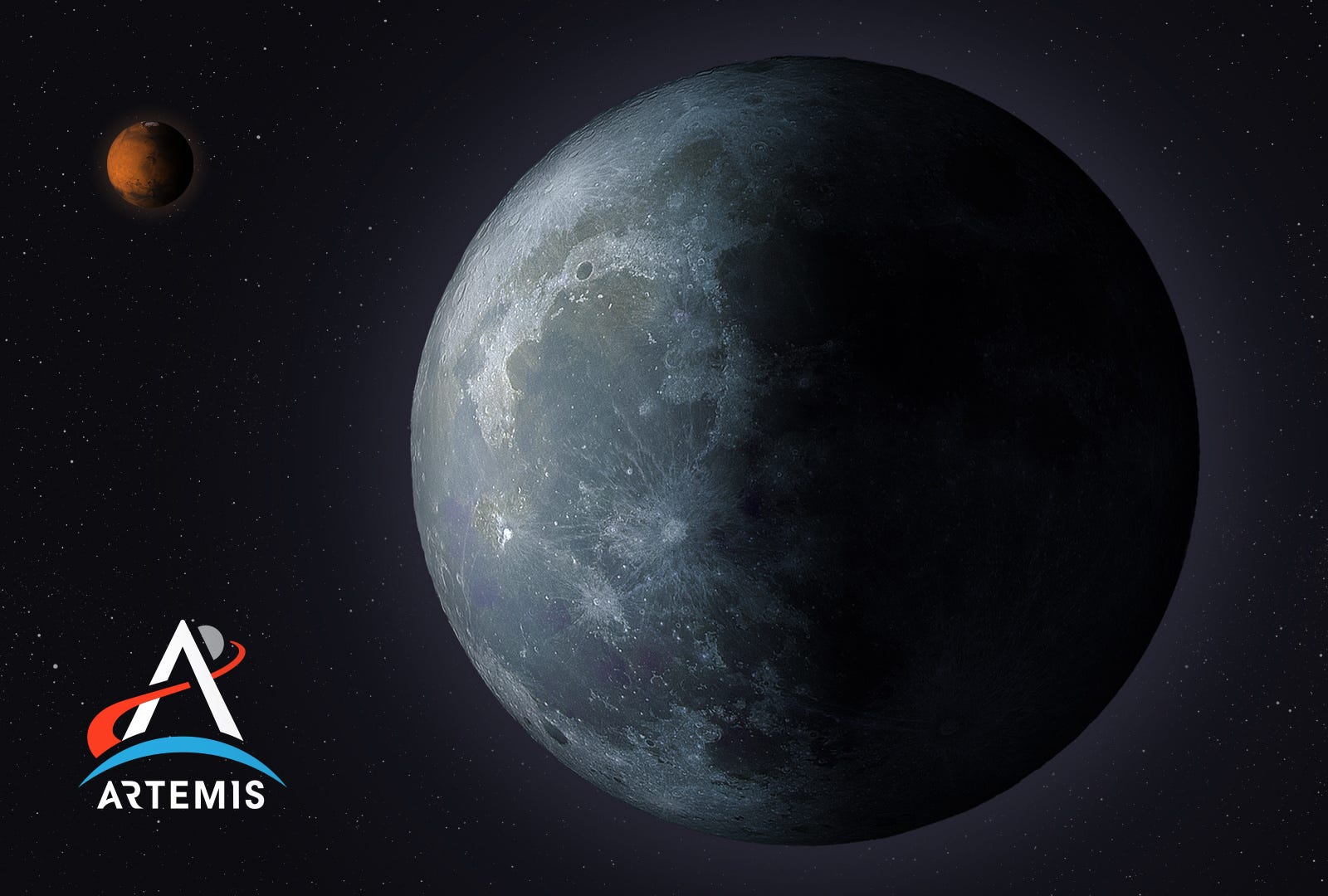
Next up, the Aerospace Safety Advisory Panel (ASAP), a committee that reports to NASA and Congress, issued its 2021 annual report based on the panel's frequent and periodic observations of NASA’s operations and interactions with personnel. One of its key recommendations concerns the fact that NASA’s Artemis program isn’t actually a single program, but a massive collection of related programs none of which answer to a common program manager or board.
There is no clearly defined leader of the enterprise, transparently endowed with the ultimate authority, responsibility, and accountability to direct all Artemis-related programs and ensure full synchronization and integration of effort.
Exploration
With the aid of NASA’s LRO spacecraft currently orbiting the Moon, Intuitive Machines has validated their communication system to be used on its first Moon landing mission this year, part of NASA’s CLPS program, and all missions beyond. Under a Space Act agreement, NASA lent Intuitive Machines access to LRO to conduct a live test using company partner Morehead State University’s 21-meter antenna. The radio dish successfully locked on to LRO’s radio frequency and fed downlinked data back to Intuitive Machines’ Control Center in Houston. The team successfully determined LRO’s orbit too.
This is a huge step for Intuitive Machines since NASA has urged CLPS companies to use (commercial) ground stations instead of the agency’s own Deep Space Network. To that end, Intuitive Machines has already signed agreements to get commercial Earth communication services for its lunar missions with Goonhilly’s GHY-6 deep space antenna in the UK, KSAT in Norway, and the high-bandwidth capable Parkes disk in Australia.

After replacing one of the eight faulty engine controllers on the SLS rocket earlier this month, NASA has completed testing all of its related functions. The agency also successfully tested the retraction and extension of the crew access arm to Orion, which is what will provide access to the spacecraft to technicians for final pre-launch preparations, and to astronauts for entry during future crewed Artemis missions. The agency is now continuing the fully stacked rocket’s integrated tests. and preparing for rolling out the rocket to the launchpad to test fueling, defueling, and related procedures in late February. Depending on the success of this wet dress rehearsal, NASA will set the target date to launch SLS for its Artemis I mission to send an uncrewed Orion spacecraft around the Moon and back. The launch is likely to take place no earlier than April.
Meanwhile, NASA says building hardware for the crewed Artemis II and III missions seems to be progressing well. The SLS rocket’s boosters and RS-25 engines for both the missions are in the final stages of their assembly. Specifically, the four RS-25 engines for the Artemis II mission to send astronauts around the Moon in 2024 have been built and are awaiting assembly with the still-being-built core stage of the SLS rocket.
As part of a New Year update on Russian space agency projects, the agency’s director general, Dmitry Rogozin, has shared that the Luna-25 spacecraft was fully assembled and heavily tested last year. The spacecraft will launch sometime in July this year on a Soyuz-2 rocket to attempt an autonomous Moon landing. We know from past presentations that Luna-25 will have 9 scientific instruments, including an arm to sample material from 20 to 30 centimeters below the surface and feed it to a laser spectrometer to determine elements and isotopes within. There’s also an ESA camera onboard to image the landing, and a neutron and gamma ray spectrometer to identify the composition of the subsurface. The mission’s landing site, while not truly polar due to engineering constraints, is selected at about 70° South such that underground water ice can still be detected.
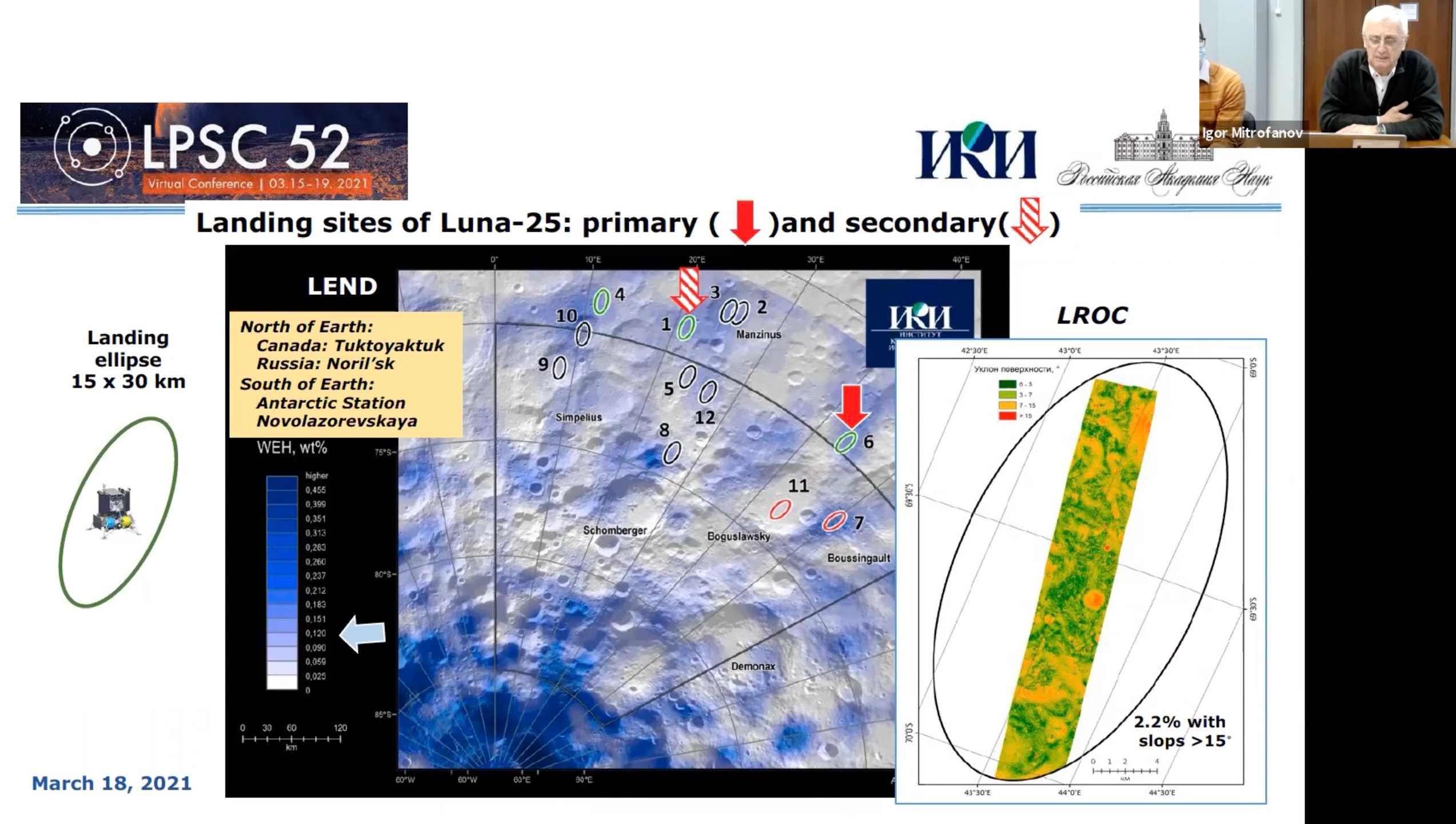
Even as Masten Space is preparing to land its first spacecraft on the Moon’s south pole in late 2023 as part of NASA’s CLPS program, the company has announced a second Moon landing mission. Masten says the mission’s launch date and landing site will be decided by the primary payload customer but they’re targeting a 2024 launch for now. Interestingly, Masten says they can even have the lander touch down in permanently shadowed regions, thanks to their proprietary heat and power system which will allow onboard instruments to survive the frigid regions as well as the lunar night. In order to simultaneously assemble and test two spacecraft, Masten will double the size of its facilities by March 2022.
Science
Our Moon is home to some lovely lava channels, relics from the time when our cosmic neighbor was volcanically active. The largest lunar valley, Vallis Schröteri, is comparable to the Grand Canyon on Earth. Vallis Schröteri is approximately 160 kilometers long, up to 11 kilometers wide and almost 0.5 kilometers deep.
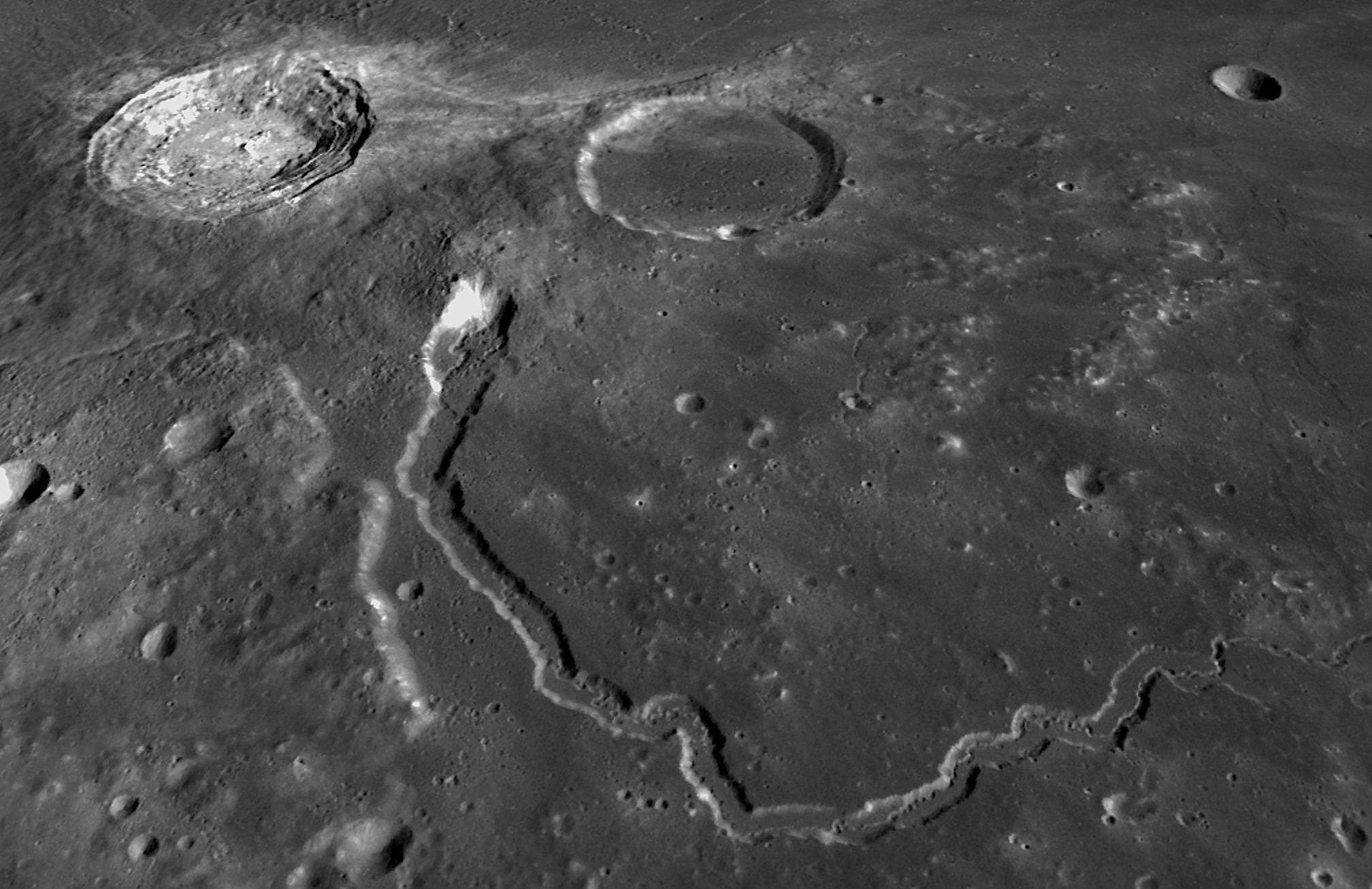
The river-like lava channel seems to have its source vent at the “Cobra Head” like feature seen to the middle-left in the image. Look closely and you will see that there is another, even longer lava channel running within the primary one. Such nested form of valleys indicate multiple past volcanic eruptions in the region, and that the lava was highly fluid judging by how easily it carved twists and turns in the terrain. Future missions physically examining and sampling such sinuous lava channels, which expose layers of past lava flows, will give us richer views of the Moon's volcanic past.
Scientists have recently been vouching even more strongly for missions to Vallis Schröteri. One such new paper combines data from several past lunar orbiters to provide an holistic overview of the region. The authors also propose landing sites and mission concepts to study the Cobra Head source vent of Vallis Schröteri. Interestingly, the landing site of Intuitive Machines’ first Moon mission—at 24.53N, 50.49W—is about 30 kilometers west of the Cobra Head. However, the mission doesn’t have a mobile platform to rove to and explore the valley. Even if it did, the mission isn’t designed to address questions related to the Moon’s volcanism. That being said, the current landing trajectory of Intuitive Machines’ spacecraft takes it right over the Cobra Head prior to touchdown so we might see some incredible close-up views of the Moon’s Grand Canyon after all.
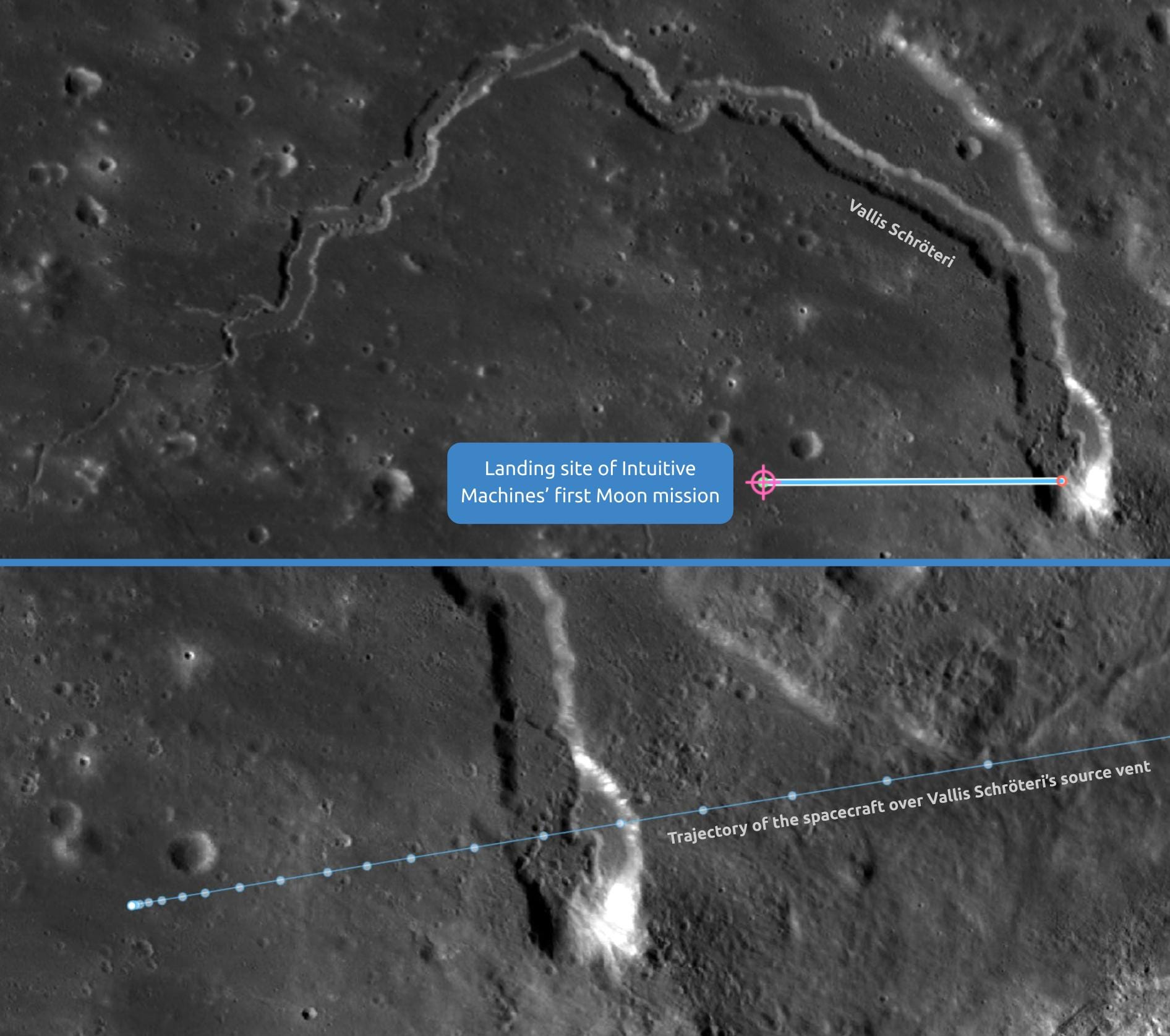
More Moon
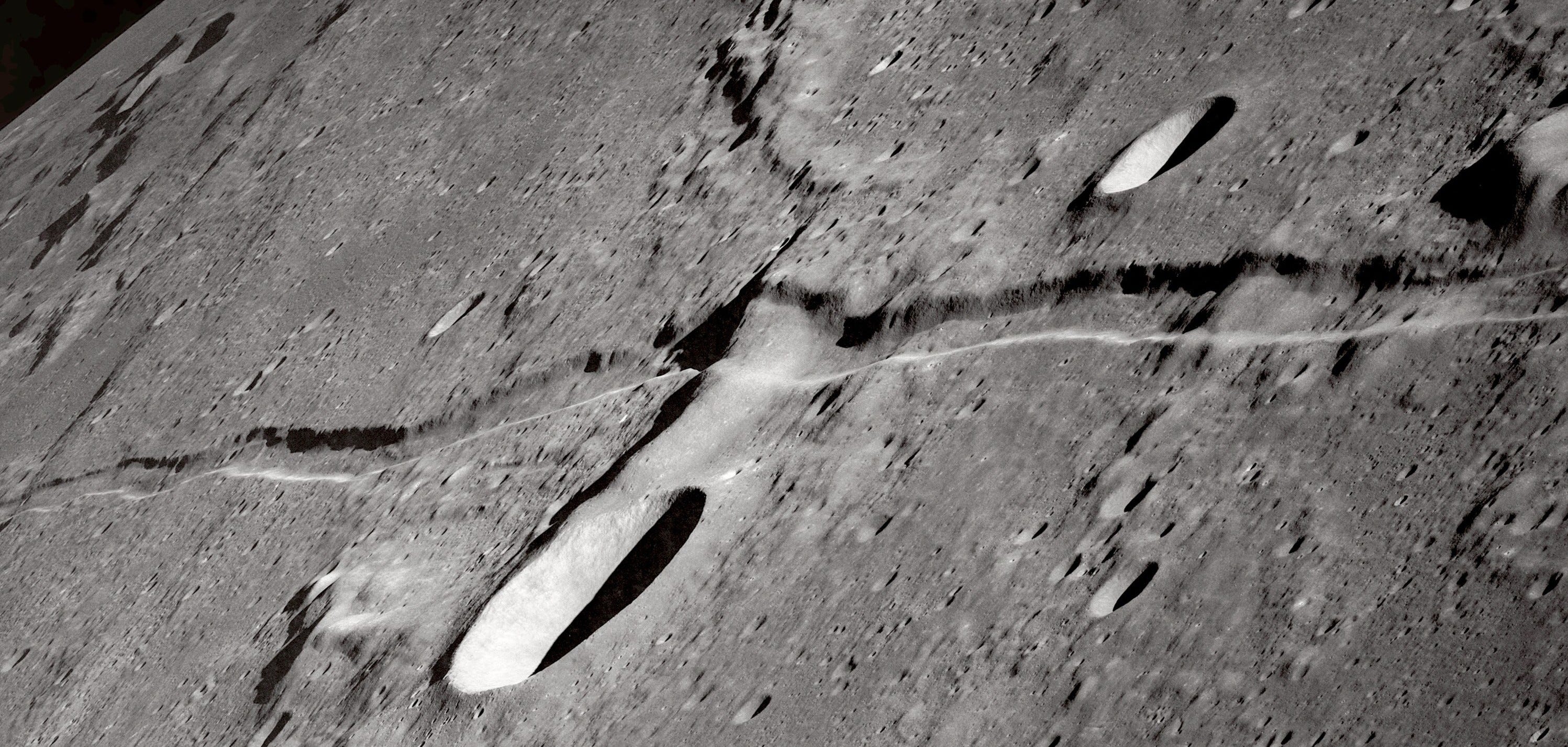
Thank you Jamie Rumbelow for supporting me and powering this edition of Moon Monday! He wishes me to link to GiveWell instead of his own website/social. ☺️
Everyone, I’m publishing this one-of-a-kind Moon exploration newsletter for free, with no ads. And it will stay that way. If you like my work, support me to keep it going.
